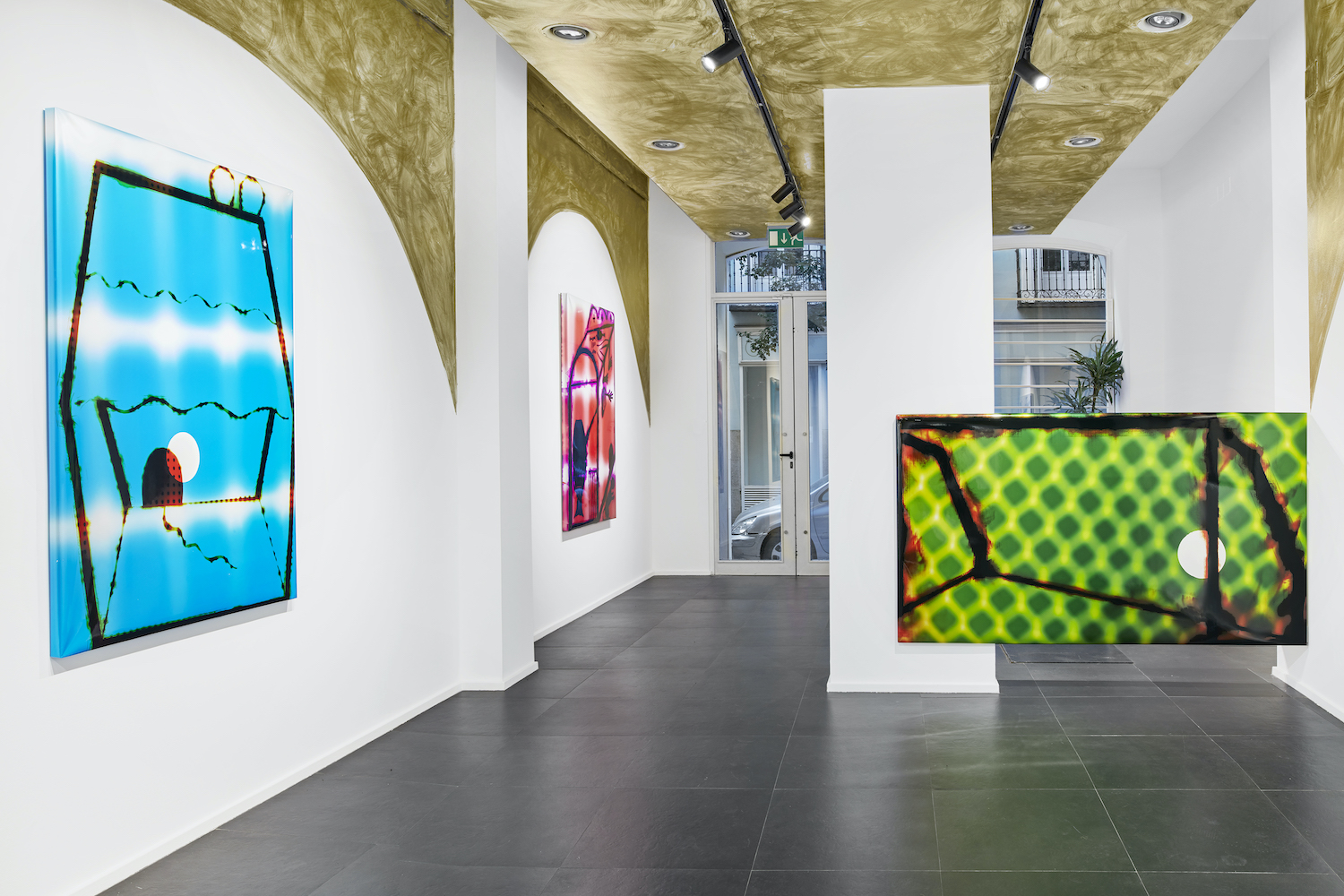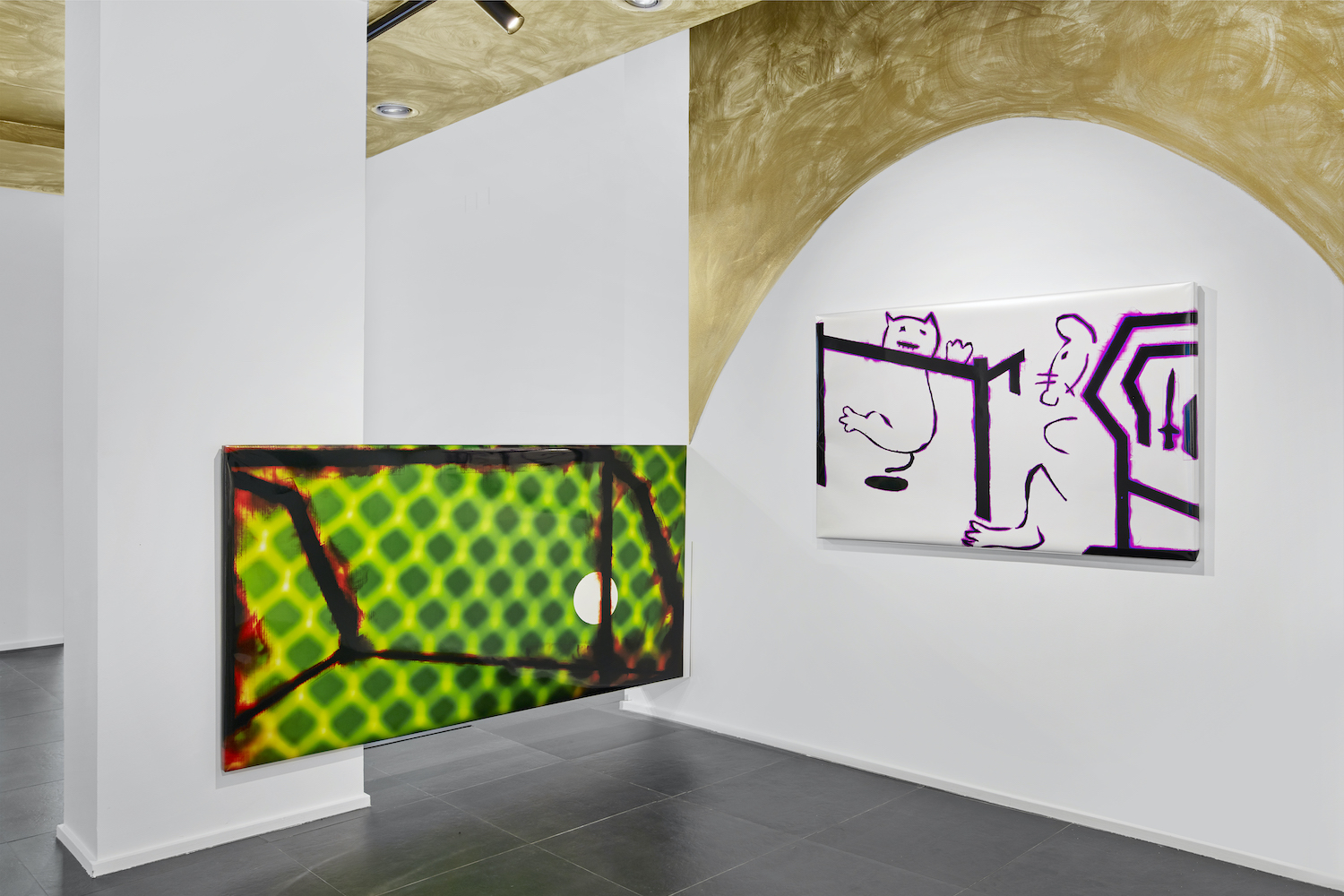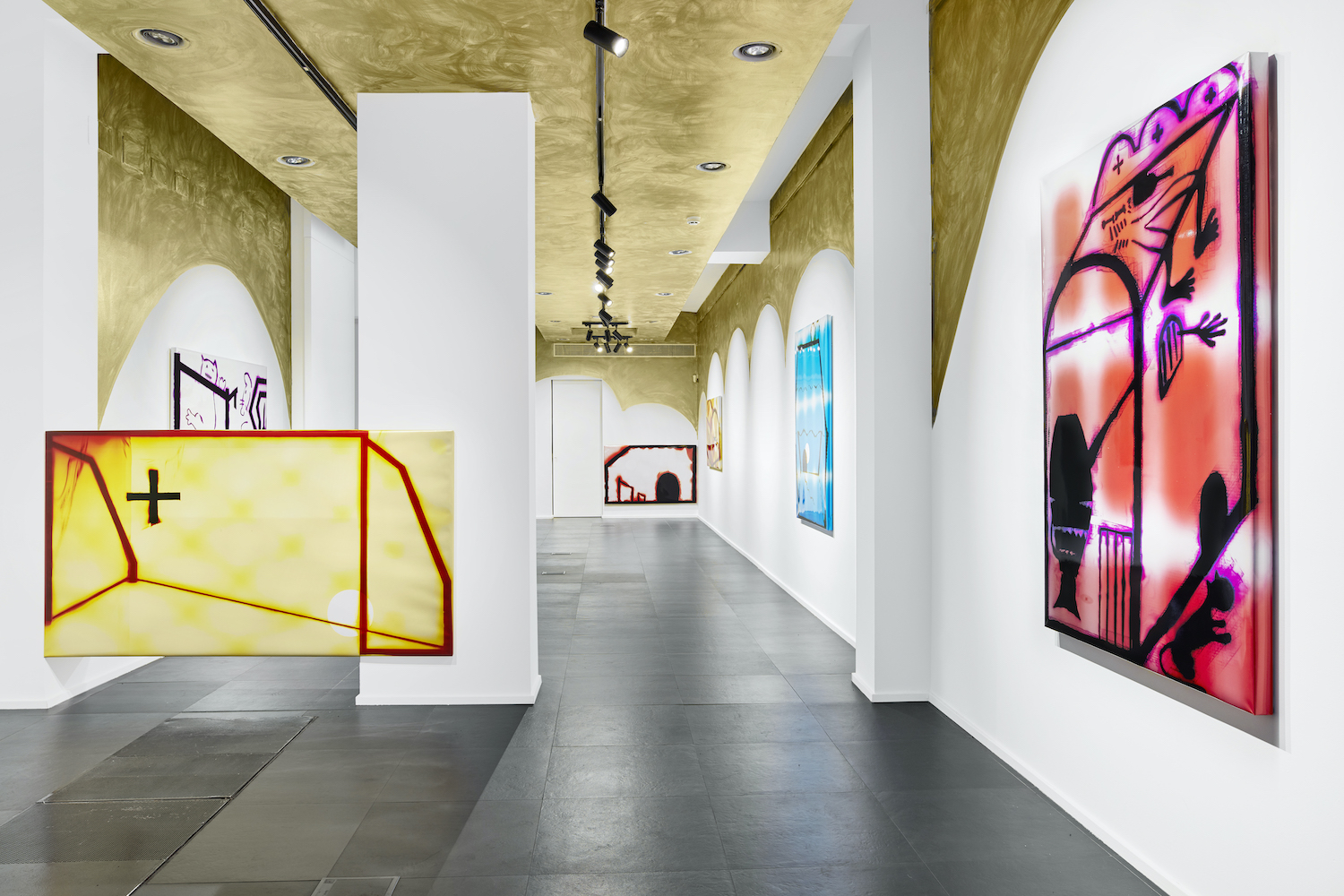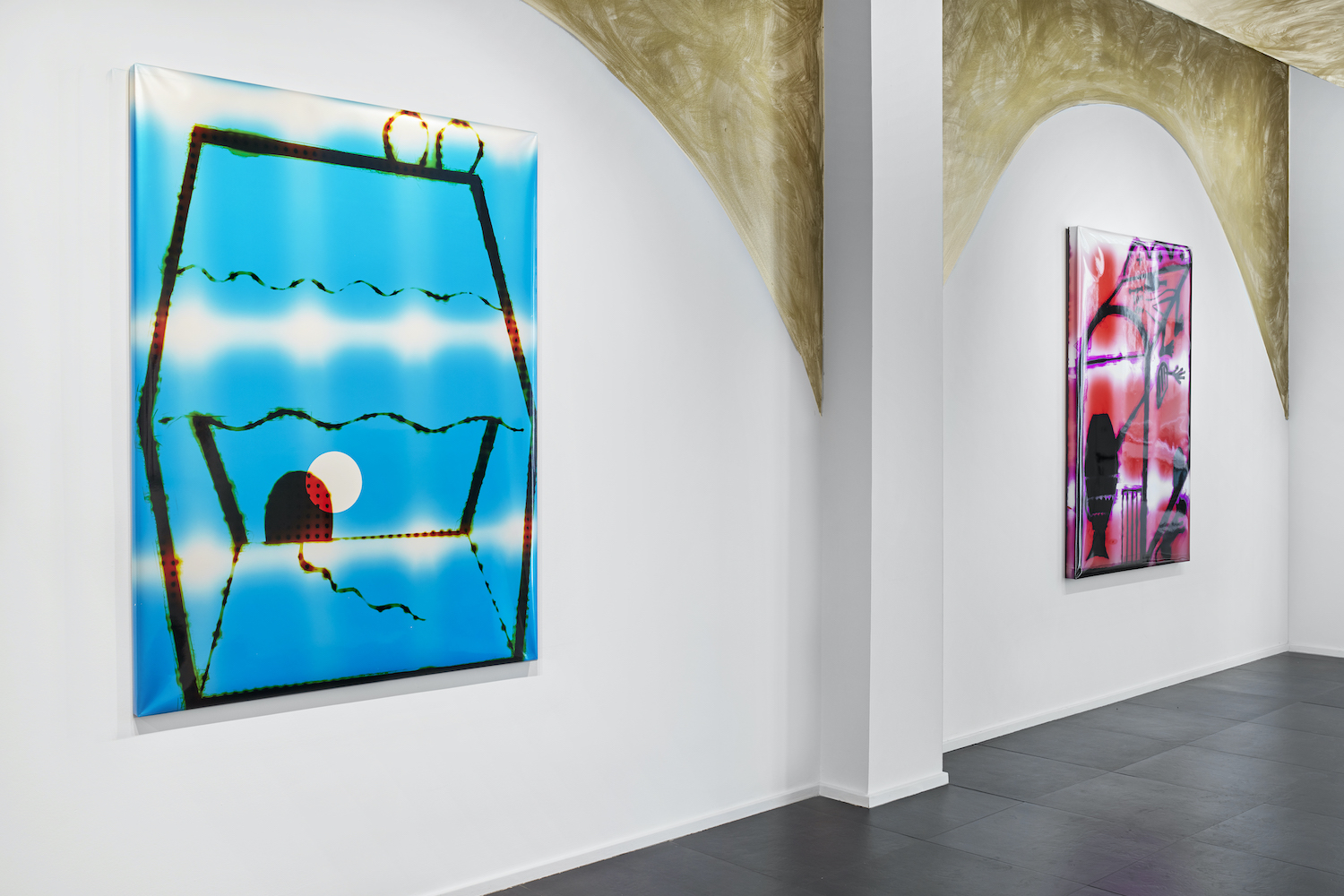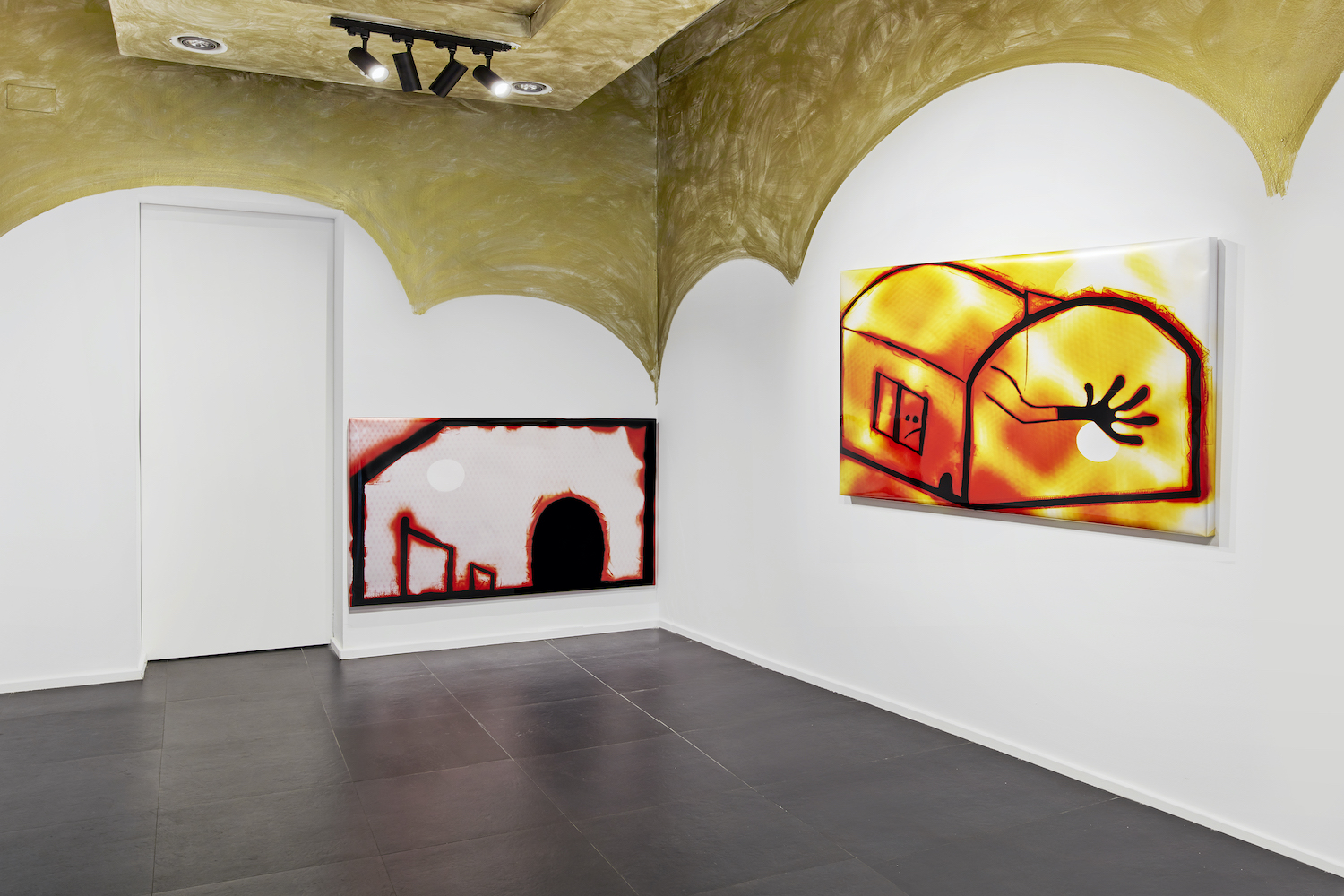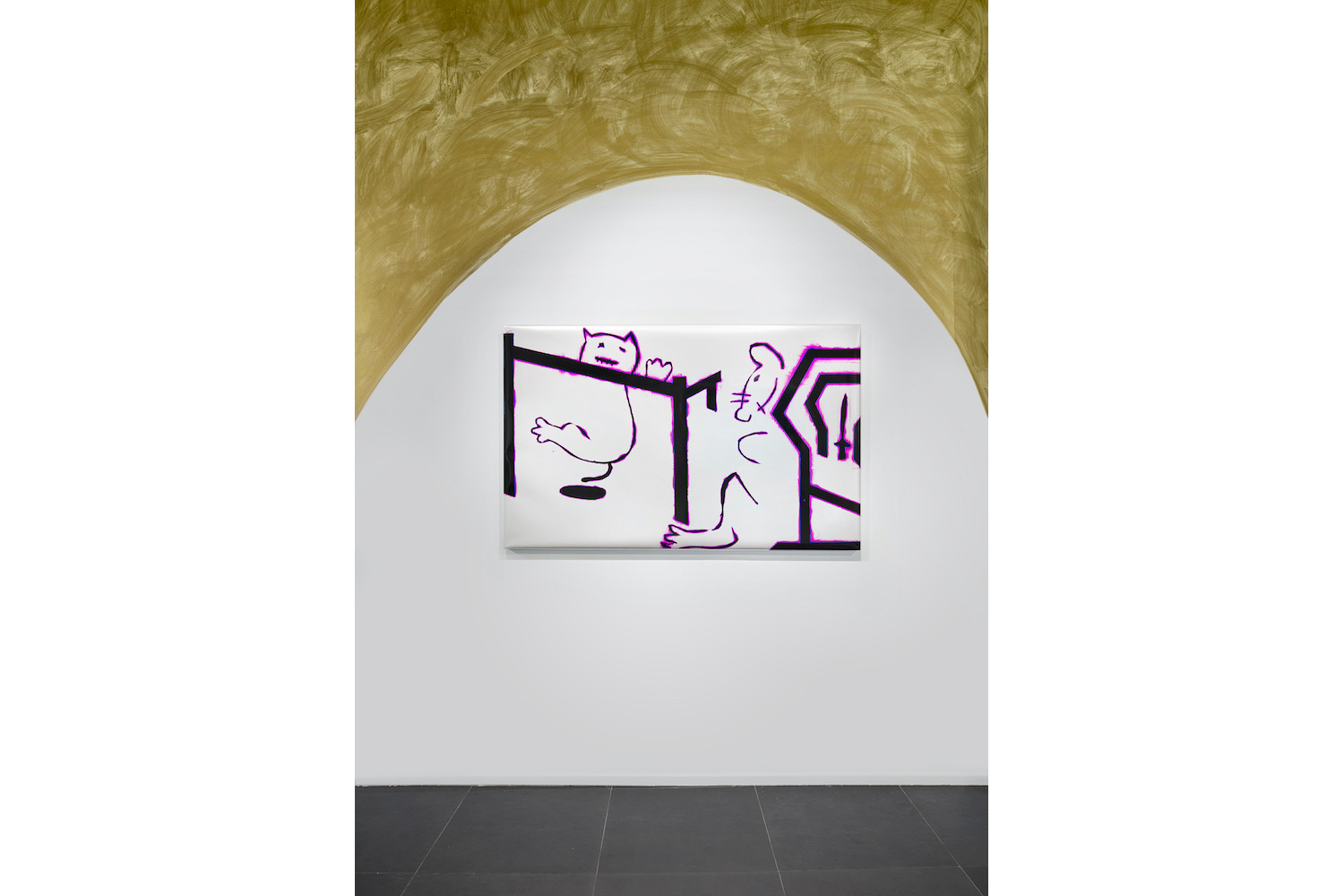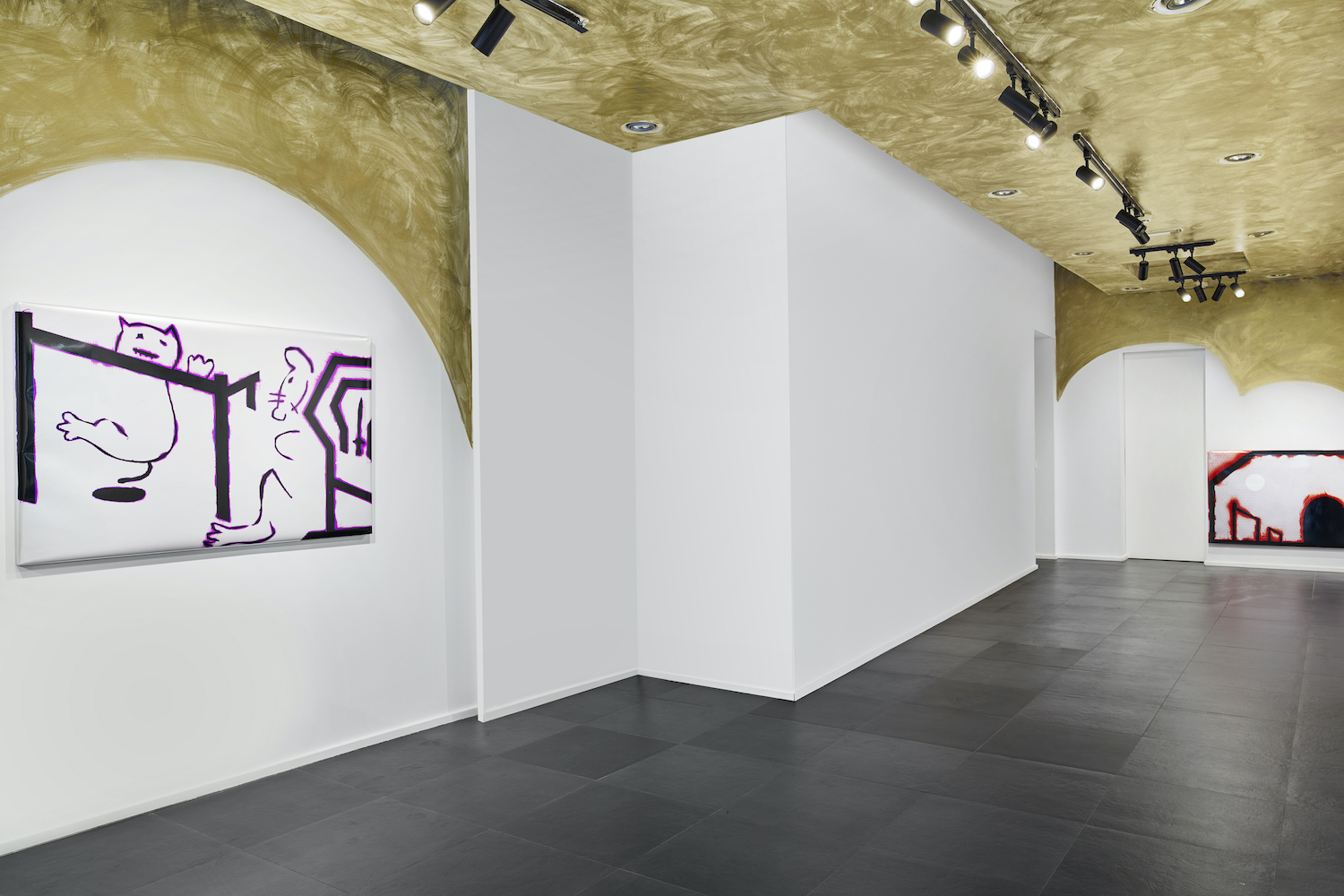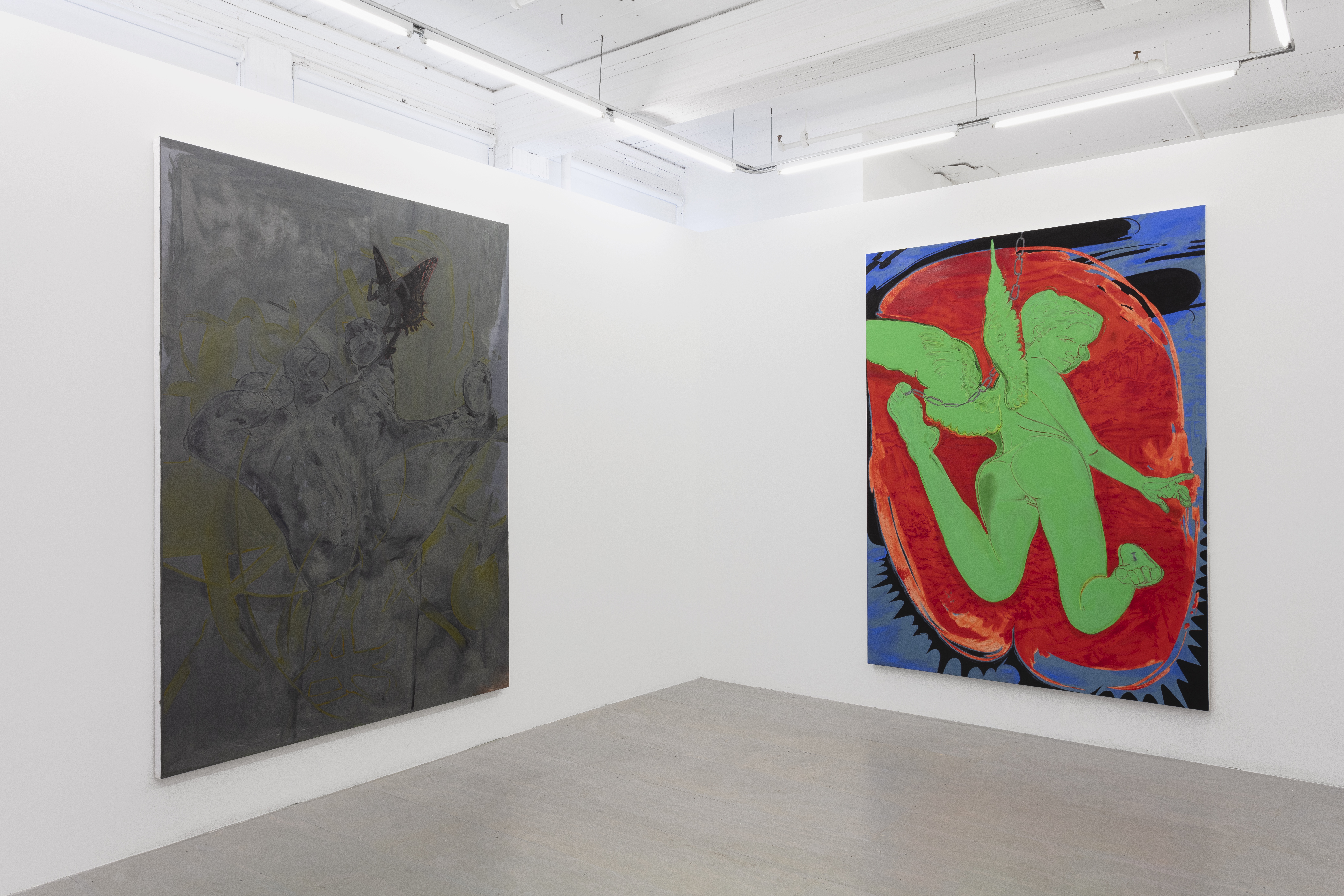When visitors step inside Fahrenheit Madrid, they immediately find themselves bathed in the Byzantine glow of walls and ceilings dressed in gold, with medieval arches framing Hadi Fallahpisheh’s most recent creations, whose rich, dazzling colors recall the glazed mosaics of the opulent Eastern Roman Empire.
However, Iranian artist Fallahpisheh is not a mosaicist, and his work depicts neither biblical nor courtly scenes. This is an artist who paints without a brush, a photographer without a camera; without touching the work, he records his bodily movements upon it. These are marks of a performance he stages to embed every line and every shape upon the surface, traces of the vital energy and rhythm of its creator. Fallahpisheh reinvents painting, photography, and performance by reminding us that art is infinite, a Pandora’s box — or “Pandora’s camera” in the words of Joan Fontcuberta — in which imaginative spirits are constantly finding new ways to express themselves.
Though heavenly Jerusalem is not described, nor is Empress Theodora and her retinue portrayed, the artist’s combination of unconventional techniques has spawned a multitude of hypnotically resplendent and colorful images. But what do we find in Fallahpisheh’s installation aside from the overwhelming aesthetic experience of vibrant colors? Inside the Madrid gallery, once our eyes grow accustomed to the enveloping brilliance, we eschew the deceptive first impression of apparent abstraction and begin to make out signs of reality beneath the golden canopy: lines, objects, and atmospheres are repeated in work after work, interconnecting and triggering a desire to unravel what lies beneath those symbols, hidden. Mouse faces, burrows, boxes, cages, nets, soccer goals, white spheres: all are enmeshed in a sparkling palette. Fallahpisheh does not want to be a painter or a photographer, and has no desire to be labeled as such, because in reality he is a narrator, a storyteller. Horace’s ut pictura poesis (painting as poetry) reminds us that painting is a silent poem and poetry a spoken painting. As he dances around the photographic print, this atypical Iranian poet gradually reveals his life to the observer: the landscape of blinding suns and radiant skies of his native Iran; his past as a professional soccer player; his experience as an immigrant, always open to suspicion, treading with mouse-like caution, ever wary of potential traps. These pieces of his life emerge here and there. The explosion of color that bursts boldly out of the picture plane and lunges at our eyes, rattling us, immediately wraps us in a warm embrace and draws us into the scene, inviting us to discover the most personal, private facets of its creator.

